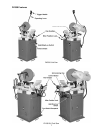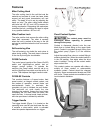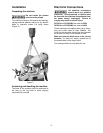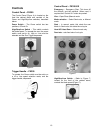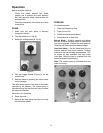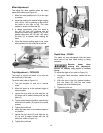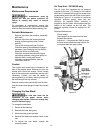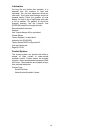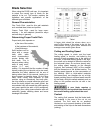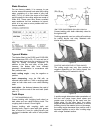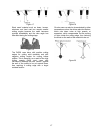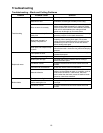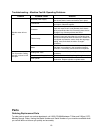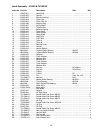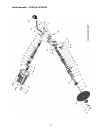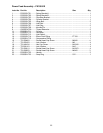
15
Blade Selection
When using the FK350 cold saw, it is important
to select the correct type of blade for the
material to be cut. This section explains the
limitations and specific applications of the
different types of blades.
General Characteristics:
Fine Tooth Pitch --used for thin wall materials
such as sheet steel, tubes and profiles
Coarse Tooth Pitch --used for large cross-
sections -- for soft materials (aluminum alloys
and soft alloys in general).
Determining Proper Tooth Pitch
Proper tooth pitch depends on:
a) the size of the section;
b) the hardness of the material;
c) wall thickness.
Solid sections call for
discs with a coarse
tooth pitch, while
small cross-sections
require blades with
finer teeth. This is
because when cutting
walls of small cross-
section (1–7 mm)
profiles, it is important that the number of teeth
actually making the cut should not be too small,
otherwise the effect obtained will be one of
tearing rather than of chip removal, leading to a
large increase in shearing stress. On the other
hand, when cutting thick materials or solid
sections using an excessively fine tooth pitch,
the chip collects as a spiral inside the gullet, and
since fine tooth pitches have small gullets, the
accumulated chip will exceed the gullet capacity
and press against the walls of the workpieces,
resulting in poor cutting (same situation with soft
materials), greater shearing stress and hence
breakage of the blade.
Table 1
A larger pitch should be chosen when, as a
result of the shape of the piece to be cut, the
cross-section at any given point exceeds the
average cross-section given above.
Cutting and Feeding Speed
The cutting speed, in m/min, and the head
feeding speed, in cm
2/min, are limited by the
amount of heat generated near to the points of
the teeth. If the head feeding speed is too high,
the cut will not be straight in either the vertical or
the horizontal plane. As we have already said,
the cutting speed depends on the strength
(kg/mm
2) and hardness (HRC) of the material
and the dimensions of the thickest section. The
feeding speed depends on the cross-section of
the material. Solid or thick-walled materials
(thickness>5mm) can therefore be cut at high
speed providing there is sufficient swarf removal
by the blade, while thin-walled materials such as
tubes or thin profiles must be cut with a low
feeding speed.
A new blade requires a
break-in period, during which time about half
the normal feeding speed should be used.
Coolant
The cooling fluid ensures that the blade teeth
and material in the area of the cut do not
overheat. The fluid must be an excellent
lubricant so as to prevent abrasion of the teeth
and welding of the chips to the teeth themselves
(seizing).



